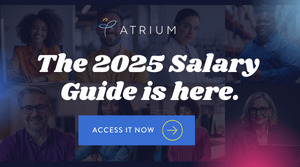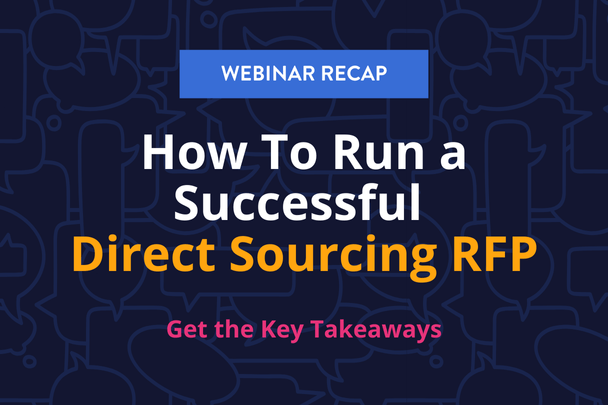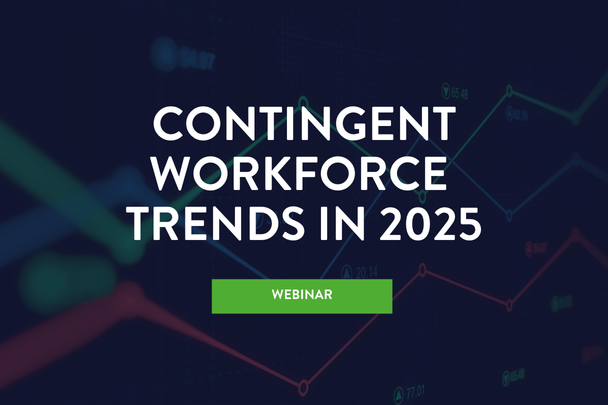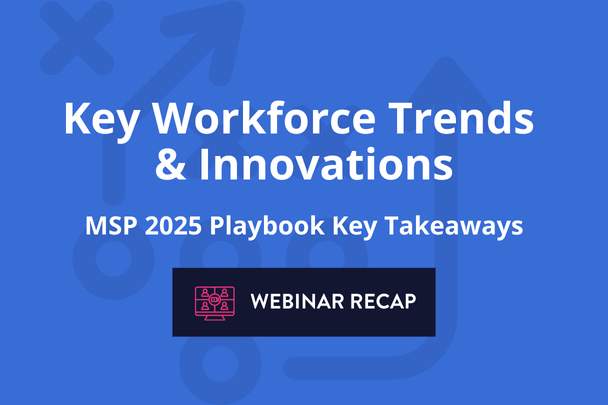There’s no denying it. The contingent workforce is growing. Today, nearly every industry sees the value of leveraging contingent workers to augment their permanent employees. According to some reports, as much as 50% of the U.S. workforce today is made up of flexible/contingent workers. There are a lot of factors driving this trend: labor shortages, remote work technology, workers seeking out more flexible opportunities and much more. But, there is one trend that has repeatedly proven to accelerate utilization of the extended workforce: uncertainty.
Contingent labor can help you scale despite uncertainty
If you look back at the (brief) history of the 21st Century, every major event seems to come straight out of left field: 9/11, the Great Recession, COVID-19, the rise of social media, the smartphone, and everything in between. It’s important to remember that these factors didn’t actually create the trend toward a more flexible workforce, what they did was accelerate it. As the modern workforce makeup evolves, the strategic use of contingent workers has steadily increased, and uncertainty only gives further momentum to this trend.
For most industries, traditional approaches to strategic planning don’t work anymore. There’s always something you didn’t expect around the corner and, if you’re too married to the plan you rolled out last November, you’re going to have a hard time adapting to the changing circumstances. Now, that doesn’t mean we shouldn’t or can’t make strategic plans that we work toward. It just means we have to become more comfortable with pivoting and adapting on our way to achieving the goals laid out in those strategies.
Growth in contingent workforce
I firmly believe that the uptick in the contingent workforce (becoming more commonly referred to as the extended workforce) is a direct response to the need for more fluid, adaptive approaches to uncertainty. It’s a way to experiment with new ideas that may or may not work.
It’s also a way to respond to shifts in market demand without resorting immediately to layoffs or hiring new employees.
As the flexible workforce becomes a larger and larger percentage of your total workforce, its strategic importance must also rise. If contingent labor makes up a significant chunk of your total workforce, shouldn’t you be devoting a significant chunk of your time and energy to attracting, engaging, and retaining them too?
So, how do we manage, cultivate, and maximize the value of our strategic investment in the flexible, contingent workforce? Answer: create processes and experiences that motivate and engage these flexible workers to give their best for your brand and keep them coming back for more.
The changing face of the contingent workforce
The contingent/extended workforce isn’t just growing. It’s evolving and changing in response to what businesses need AND what workers want. In nearly every industry, talent shortages are having a huge impact. More and more people are opting to work as contractors not just because they have to but, in many cases, because they want to! They appreciate the flexibility and freedom of participating in the extended workforce.
Compare the contingent workforce of 30 years ago with the extended modern workforce of today and you’ll notice that more and more skilled workers are choosing to work without permanent employment, or augment their full-time jobs with short-term/flexible work on the side. Take a look at any field (e.g., medicine, IT, marketing, accounting, etc.) and you’ll see a bustling, growing market for non-permanent workers.
Contingent workers are a strategic asset
As the extended workforce becomes a bigger and bigger segment of your workforce, your ability to inspire, engage, and lead this talent will become a true competitive advantage.
Build your own private extended workforce
Here’s one last tip before we go, we’re also seeing a lot of organizations have success with “direct sourcing” their own, private pool of flexible/contingent talent. Organizations are finding that it can give you more control over quality, decrease time to fill, and reduce costs over time. It’s always good to have direct access to your contingent workforce at a moment’s notice, especially in times of uncertainty!
What does success look like?
Suddenly, your organization can staff up quickly with engaged and effective talent to capitalize on a new opportunity. Your organization can adapt and pivot better than ever before. Suddenly, uncertainty in the economy just doesn’t seem so scary anymore.
It all starts by recognizing the strategic value contingent workers provide, earning how to get the best out of them, and finding a talent solutions partner who gets it.











